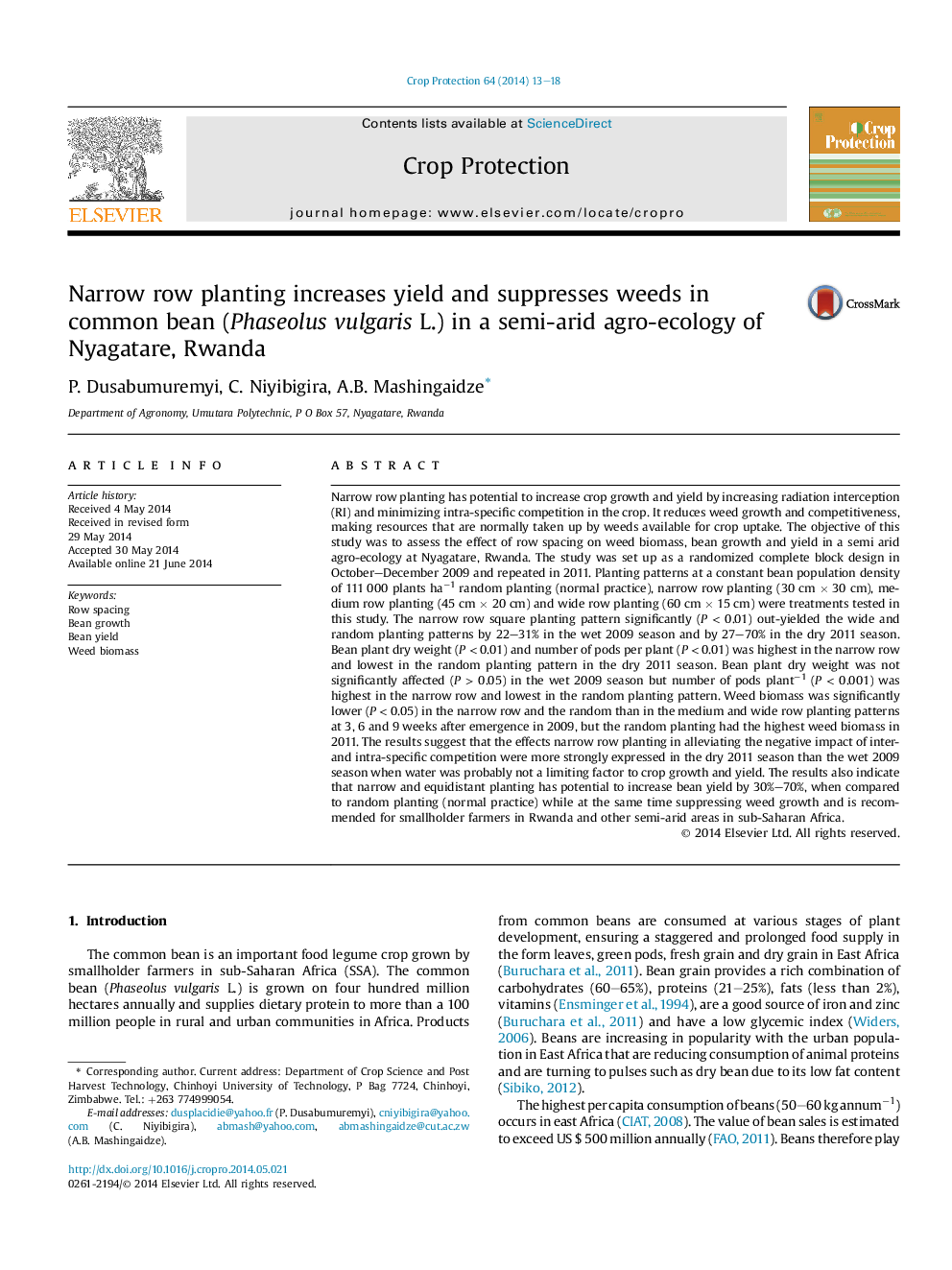| کد مقاله | کد نشریه | سال انتشار | مقاله انگلیسی | نسخه تمام متن |
|---|---|---|---|---|
| 6373643 | 1624323 | 2014 | 6 صفحه PDF | دانلود رایگان |

- We studied row spacing effects on weed biomass and bean yield in a semi arid area.
- Plant biomass and yield decreased the wider the row spacing and on random planting.
- Yield differences more in a dry 2011 season than wet 2009 season among treatments.
- Narrow rows were more effective in increasing yield in a dry than wet season.
- Narrow rows exhibited greater weed suppression than other row treatments.
Narrow row planting has potential to increase crop growth and yield by increasing radiation interception (RI) and minimizing intra-specific competition in the crop. It reduces weed growth and competitiveness, making resources that are normally taken up by weeds available for crop uptake. The objective of this study was to assess the effect of row spacing on weed biomass, bean growth and yield in a semi arid agro-ecology at Nyagatare, Rwanda. The study was set up as a randomized complete block design in October-December 2009 and repeated in 2011. Planting patterns at a constant bean population density of 111 000 plants haâ1 random planting (normal practice), narrow row planting (30 cm Ã 30 cm), medium row planting (45 cm Ã 20 cm) and wide row planting (60 cm Ã 15 cm) were treatments tested in this study. The narrow row square planting pattern significantly (P < 0.01) out-yielded the wide and random planting patterns by 22-31% in the wet 2009 season and by 27-70% in the dry 2011 season. Bean plant dry weight (P < 0.01) and number of pods per plant (P < 0.01) was highest in the narrow row and lowest in the random planting pattern in the dry 2011 season. Bean plant dry weight was not significantly affected (P > 0.05) in the wet 2009 season but number of pods plantâ1 (P < 0.001) was highest in the narrow row and lowest in the random planting pattern. Weed biomass was significantly lower (P < 0.05) in the narrow row and the random than in the medium and wide row planting patterns at 3, 6 and 9 weeks after emergence in 2009, but the random planting had the highest weed biomass in 2011. The results suggest that the effects narrow row planting in alleviating the negative impact of inter- and intra-specific competition were more strongly expressed in the dry 2011 season than the wet 2009 season when water was probably not a limiting factor to crop growth and yield. The results also indicate that narrow and equidistant planting has potential to increase bean yield by 30%-70%, when compared to random planting (normal practice) while at the same time suppressing weed growth and is recommended for smallholder farmers in Rwanda and other semi-arid areas in sub-Saharan Africa.
Journal: Crop Protection - Volume 64, October 2014, Pages 13-18